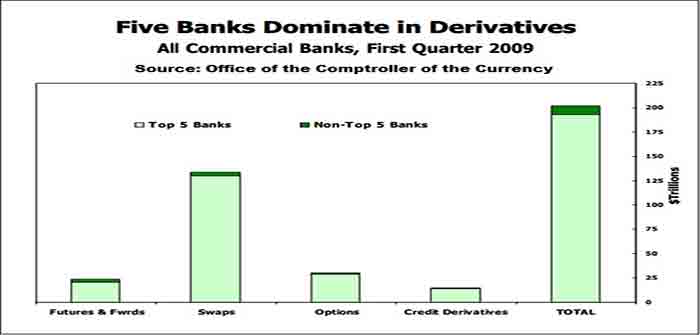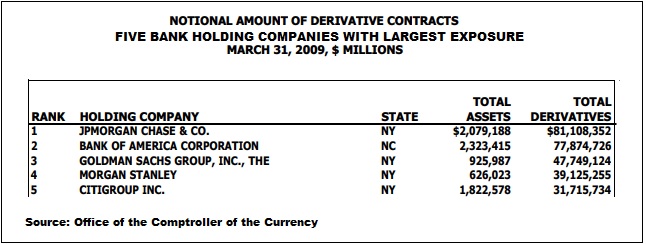
by Pam Martens and Russ Martens at Wall Street on Parade
According to the Financial Crisis Inquiry Commission (FCIC), derivatives played a major role in the financial crash of 2007 to 2010 in the United States, the worst financial crisis in the U.S. since the Great Depression of the 1930s. The FCIC wrote in its final report: “…the existence of millions of derivatives contracts of all types between systemically important financial institutions — unseen and unknown in this unregulated market — added to uncertainty and escalated panic….”
Americans believed that the Dodd-Frank financial reform legislation of 2010 would fulfill its promise of reining in concentrated risks like derivatives. It did not. (See our report from 2015: President Has His Facts Seriously Wrong on Financial Reform.)
According to data from the Office of the Comptroller of the Currency (OCC), the regulator of national banks, as of March 31, 2009, five bank holding companies held $277.57 trillion in derivatives (notional/face amount). At that time, according to the FDIC, there were 8,249 federally-insured commercial banks and savings associations in the U.S. but just five bank holding companies held 95 percent of all derivatives at all U.S. banks. Those financial institutions were: JPMorgan Chase, Bank of America, Goldman Sachs Group, Morgan Stanley and Citigroup.
Now flash forward to the most recent report from the OCC for the quarter ending September 30, 2023. According to that report, those same five bank holding companies hold $223 trillion of the $268 trillion in derivatives held by all banks in the U.S., or 83 percent…
Continue Reading
